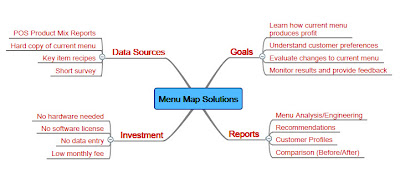Dr. Kasavana states: "While plowhorses do not help carry the restaurant's "burden of margin," they surely can be utilized to attract price sensitive buyers. These items present an opportunity to create significant price promotions." Later in the Plowhorse description, he offers a suggestion: "...try to shift demand to other, more profitable items through merchandising programs and menu positioning."

Clearly, the fastest way to higher profits would be to convert sales of these popular under-performers to Stars (highly profitable/high contribution items). Playing around with the unpopular Dogs (unpopular/low contribution) and Puzzles (unpopular/high contribution) won't have the same impact due to the relatively low number of orders sold.
My brother Paul argues these "Plowhorse" menu items deter customers from ordering a more profitable menu item. Often he finds servers promoting these menu choices when asked for help by the guest. He courageously eliminated the most popular menu item at the resort. Whether you call it a Plowhorse or a Deterrent, check averages and gross margins are way up.
We find lots of "price sensitive buyers" in the current environment. If you can't bring yourself to completely eliminate these deterrents, consider one other suggestion from the book: "Relocate plowhorse items to a lower menu profile position. Hiding these items may lead to the sale of higher contribution menu item selections." If I am interpreting this suggestion accurately, our aim is to demote these Plowhorses to Dog status.
Treatment of Dogs is straight forward in the book: "TAKE DOG ITEMS OFF THE MENU!"
If you are struggling with one or more highly popular menu items which simply do not carry their fair share of contribution, you need to take action now. You may feel the need to try to hide these items or combine them with more profitable options. Do you have the confidence to eliminate these items now? You may find more money in your bank account.